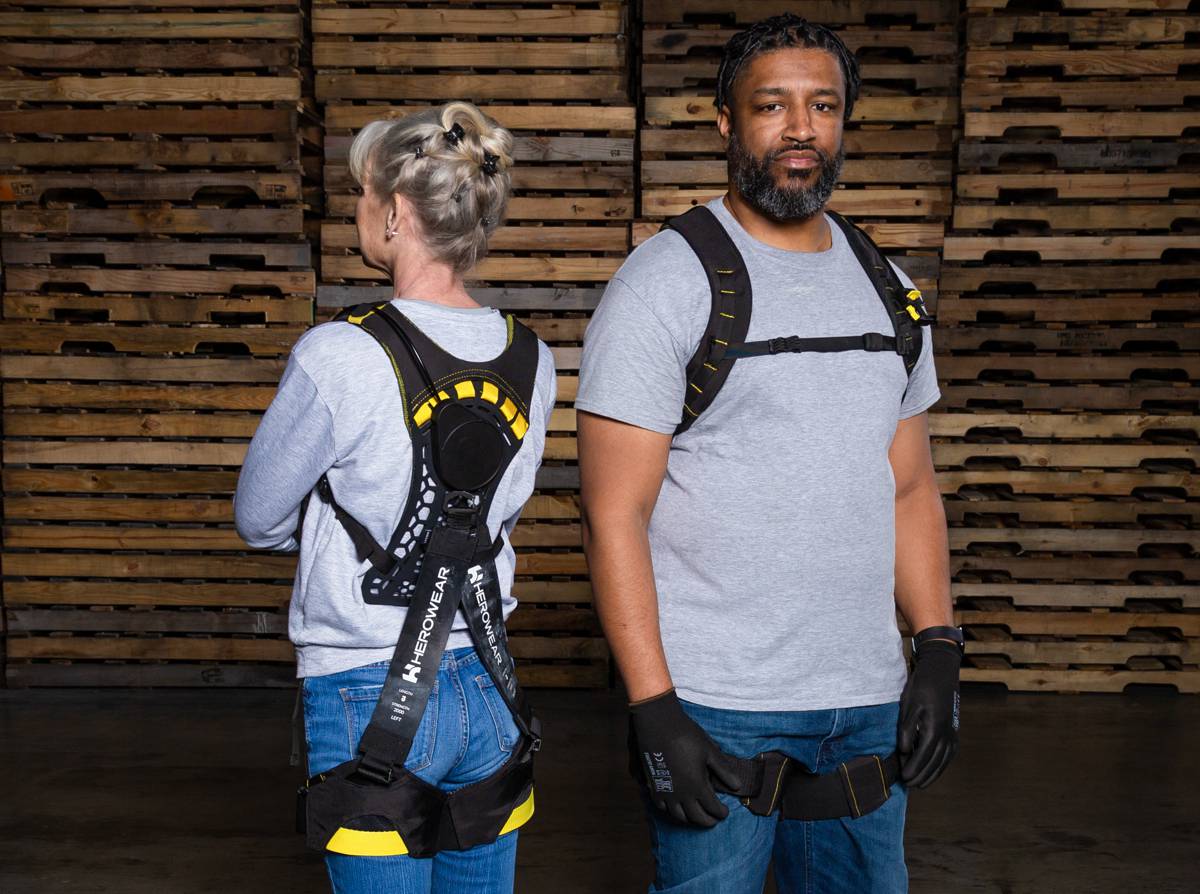Exosuits Revolutionising Worker Safety and Reducing Injuries
In the fast-paced world of warehousing and logistics, where every lift, twist, and bend can take a toll on the body, technology is stepping up to protect workers like never before. Enter HeroWear, an innovative exosuit company that’s proving its worth in reducing workplace injuries.
A recent study involving their Apex 2 exosuits has shown remarkable results, offering a glimpse into the future of occupational safety.
A Ground-breaking Study in Worker Safety
HeroWear’s new long-term study, conducted across multiple US distribution centres, is a game-changer for companies prioritising worker safety. After deploying the HeroWear Apex 2 exosuits in several warehouses, the data speaks volumes. The study collected injury data over 280,000 hours of work, equivalent to 140 full-time employees working for a year while regularly wearing the exosuits. What’s astounding? Not a single back injury was reported during this time—a stark contrast to the historical rate of one back injury every 27,000 hours.
The results are not just statistically impressive; they highlight a tangible improvement in workplace safety and worker wellbeing. Workers reported a 25% decrease in bodily discomfort and a 20% reduction in work-related fatigue. “These are exciting results for companies looking to reduce injury risk for their workers,” says Mark Harris, CEO of HeroWear. “We are encouraged to see our users are not just safer at work, but their quality of life is improving.”
Real-World Impact
The impact of HeroWear’s exosuits isn’t just about numbers—it’s about real stories from the front lines of the warehousing industry. URM, the leading food distributor in the Inland Northwest, was one of the companies involved in the study. Phil Heide, URM’s Director of EH&S, shared his enthusiasm: “We take pride in protecting our hard-working warehouse pickers. The data proves how HeroWear’s product is truly changing the game.”
Another major player, a distribution director from a large paint manufacturer, echoed this sentiment: “Ensuring safe warehouse conditions is a top priority for our company that will continue to advance with changing technology. Workers who wore HeroWear’s Apex 2 have said they feel less fatigue and discomfort.” These endorsements underscore the real-world benefits of adopting exosuits in industrial environments.
The Science Behind the Suit
At the core of HeroWear’s success is the Apex 2 exosuit, a wearable device designed to reduce strain on the wearer’s back muscles during repetitive bending and lifting. Studies have shown that the suit can offload 20-40% of the load on back muscles, making each movement significantly less taxing on the body. It’s this kind of innovation that’s drawing attention not just from logistics companies but from industries far and wide.
Dr. Karl Zelik, HeroWear’s co-founder and Chief Scientific Officer, explains the science behind the suits: “People have been asking for longitudinal data on exosuits for years, so we were excited to gather and share this injury data reported by clients. These and other clients seeing success are expanding and rolling out exosuits with more workers and at additional sites.” The ongoing data collection will continue to provide valuable insights into how exosuits can impact injury rates across various industries.
A Financial Return on a Safety Investment
While the primary goal of exosuits is to protect workers, there’s also a compelling financial argument for their adoption. Overexertion injuries cost US businesses a staggering $12.5 billion annually, with back pain remaining the leading cause of disability in over 160 countries. HeroWear’s exosuits not only help to alleviate these issues but also provide a significant return on investment. The company estimates that the Apex 2 exosuit can return up to 2.4 times its deployment cost in the first year based on injury reduction alone.
For companies, this is more than just a safety solution—it’s a strategic investment that can lead to substantial cost savings. As the technology continues to evolve, the potential for broader adoption in other high-risk industries is clear.
The Future of Wearable Safety Technology
HeroWear’s success with the Apex 2 is just the beginning. As the demand for safer working conditions grows, wearable technology like exosuits will play an increasingly critical role in reducing injuries, enhancing worker comfort, and boosting overall productivity. HeroWear is committed to leading this charge, with plans to expand their data collection to millions of hours and across diverse industries.
With a focus on continuous learning and improvement, HeroWear aims to refine their exosuits further and push the boundaries of what’s possible in wearable technology. “We will keep learning, sharing, and focusing on how exosuits impact injury rates over time,” says Dr. Zelik. The future looks bright for companies and workers alike, as the promise of safer, more sustainable workplaces becomes a reality.




















